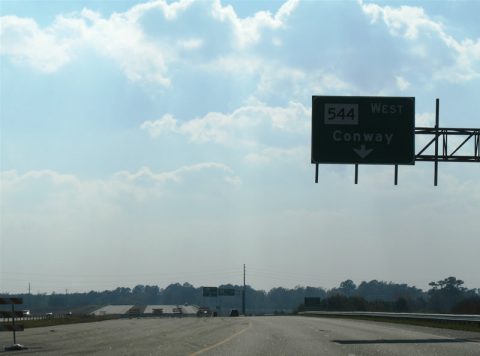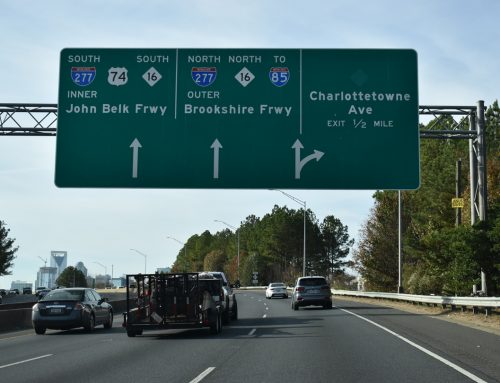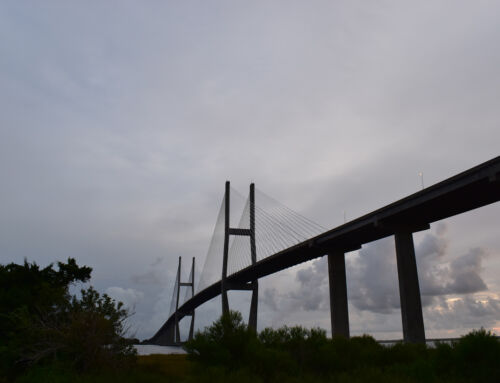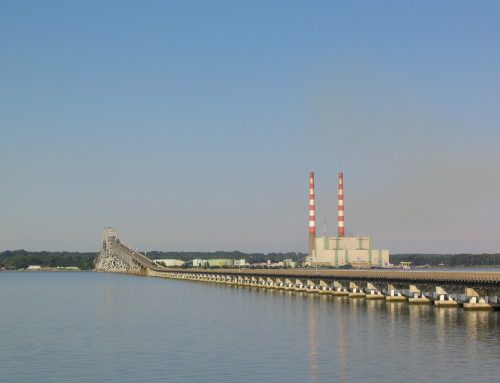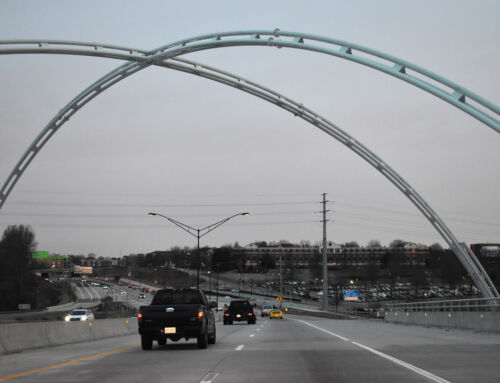Day 2 involves a ride east to Myrtle Beach and Wilmington, North Carolina to check out the fairly new South Carolina 22 (Veterans Highway) and 31 (Carolina Bays Parkway) freeways, Myrtle Beach itself, and the new Interstate 140 in Wilmington among other things.
In Summerville, the interchange between U.S. 17 Alternate and Interstate 26 exists within a commercial district based upon big box retail. As such, the interchange garners a lot of traffic from the freeway for the services that the nearby businesses provide. Looking at the satellite image of the interchange, it’s quite apparent that the full-cloverleaf interchange was recently altered to that of a six-ramp partial-cloverleaf interchange, ala Interstate 65 at U.S. 90 and U.S. 45 in Mobile, Alabama and Interstate 385 at South Carolina 291 in Greenville, South Carolina. The addition of traffic lights to an already congested stretch of U.S. 17A does not help, but at least there are still two ramps per direction from Interstate 26.
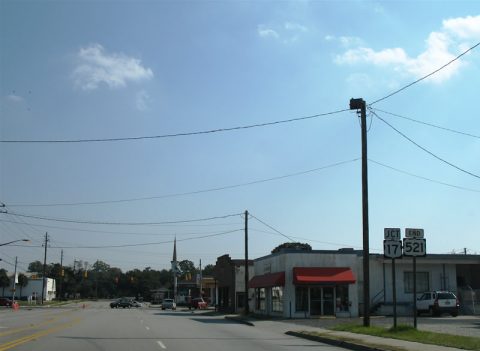
U.S. 17 Alternate joins U.S. 521 on their final approach to Georgetown and U.S. 17. Just ahead of their respective ends, U.S. 17 Alternate turns onto Church Street for 1.5 blocks to its junction with U.S. 17 and U.S. 701. U.S. 521 remains straight and ends at U.S. 17 on its own. An end sign is even in place to herald the conclusion of the two-state highway.
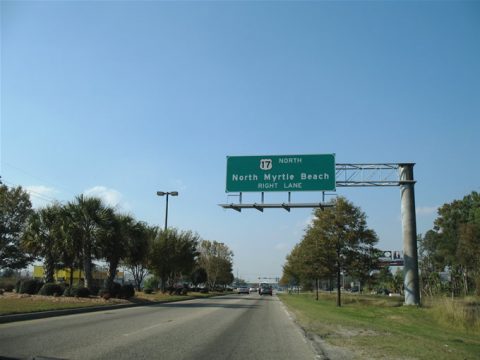
U.S. 501 begins in Myrtle Beach from the intersection with U.S. 17 Business just off the Atlantic Ocean. From there, U.S. 501 heads north along a multilane arterial to a full-cloverleaf interchange with U.S. 17. U.S. 17 bypasses the coastal areas along the more conventional commercial strip, like U.S. 17 Alternate in Summerville, lined with shopping centers and big box retail. The interchange between the two was originally a partial-cloverleaf interchange but recently was expanded into a full cloverleaf.
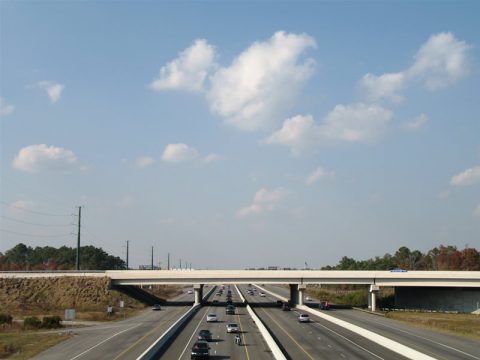
The interchange between U.S. 501 and South Carolina 31 (Carolina Bay Parkways) is unusual in that half of the ramps are situated between the Carolina Bay Parkway carriageways. Movements to South Carolina 31 are separated from U.S. 501 via long collector/distributor roadways. The view here looks north from the ramp onto South Carolina 31 westbound, which actually shares the bridge over U.S. 501 that South Carolina 31 eastbound travels over.
South Carolina 31, originally the number for the Mark Clark Expressway/Interstate 526, was resurrected for the Carolina Bays Parkway, which is a future Interstate. The future designation of South Carolina 31 has yet to be determined, it may be parts of Interstate 73, 74, or 174 at some point.
The interchange includes provisions for a southward extension, perhaps tying into U.S. 17 southwest of Myrtle Beach, or further south to Georgetown. Originally future Interstate 73 was planned to continue all the way to Charleston, but those plans appear to be uncertain. Either way the partially completed ramps await the uncertain fate of the Parkway extension.
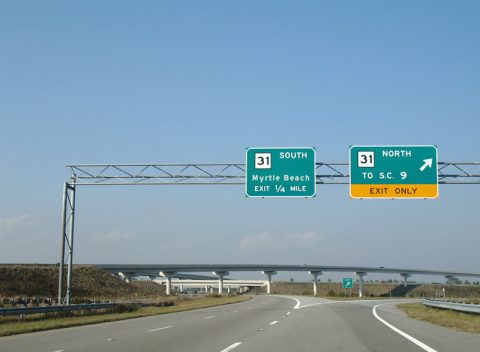
South Carolina 22 (Veterans Highway) meets South Carolina 31 (Carolina Bays Parkway) at a high-speed directional-cloverleaf interchange. Two large flyovers carry movements from east to north and west to south. The interchange otherwise is not stacked.
South Carolina 22, like South Carolina 31, is a future Interstate (73 or 74 or parts of both). Named the Veterans Highway, South Carolina 22 also acts as the Conway bypass, carrying beach-bound motorists to U.S. 17 near North Myrtle Beach to U.S. 501 outside of Conway. Provisions exist at the west end for an eventual extension as well. South Carolina 22 travels 30 miles overall otherwise.
A recent change to the Wilmington highway network involves the relocation of U.S. 17 from downtown Wilmington onto U.S. 421 north and the new Interstate 140 east. Additionally U.S. 74 also bypasses downtown via U.S. 421 north, the Parsley Street Bridge over the Cape Fear River, and the new Martin Luther King, Jr. Parkway east back to Eastwood Road (original U.S. 74 east of original U.S. 17 (now U.S. 17 Business)). Old U.S. 17 is now U.S. 17 Business with the original U.S. 74 overlap no longer acknowledged.
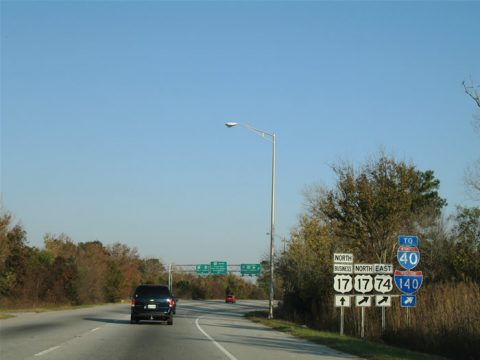
Pictured here is the approach to the U.S. 421 interchange on the U.S. 17-74-76 freeway west of the Cape Fear River and Wilmington. Guide signs were not updated for U.S. 421 to reflect U.S. 17 or 74, because U.S. 17 and 74 will see another relocation with the completion of the Wilmington bypass west of Leland.
U.S. 17 Business, 76, and 421 combine to cross the Cape Fear River Bridge into the city of Wilmington. U.S. 421 splits at 3rd Street south to Carolina Beach. A short distance east of there is the split of U.S. 76 east onto Oleander Drive for Wrightsville Beach. U.S. 17 Business meanwhile follows the one-way street couplet of 16th and 17th Streets northward toward downtown.
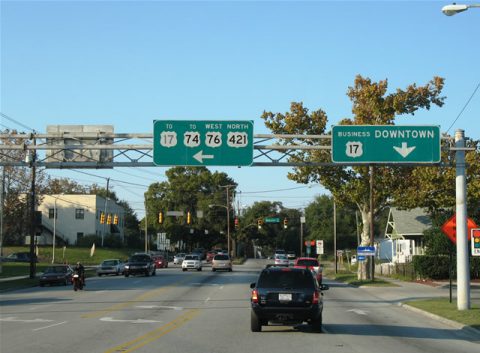
Pictured here is the U.S. 17 Business junction with U.S. 76 west (Wooster Street). U.S. 17 Business & 76 follow the one-way street couplet of Dawson and Wooster Streets between U.S. 421 and 17th Street. Notice the adjustment made to the left-hand panel with the addition of “TO” banners above U.S. 17 and 74.
Further north, U.S. 117 saw relocation from its alignment with North Carolina 133 onto College Road, tying it into the eastern terminus of Interstate 40. North Carolina 133 now travels solo southwest to the Parsley Street Bridge and the relocated U.S. 74. U.S. 74 & North Carolina 133 travel across the Cape Fear River to U.S. 117.
Interstate 40 splits from U.S. 117 on its westward journey to Barstow, California. A mileage sign posted near the beginning actually highlights the distance to the California desert city. Beyond the Gordon Road off-ramps, Interstate 40 heads to meet its newest child, that of Interstate 140. Interstate 140 constitutes a seven-mile long freeway from U.S. 421 east to Interstate 40, spanning the Cape Fear River over a fixed high-level bridge in the process. Relocated U.S. 17 shares pavement with the fledgling Interstate from U.S. 421 east to Interstate 40, and then on a new facility east from there to original U.S. 17 (now U.S. 17 Business) by the Pender County line. Interstate 140 does not continue east of Interstate 40, even though the Interstate-standard freeway does. For coverage on both the east end of Interstate 40 and the new Interstate 140, see their respective Interstate-Guides.
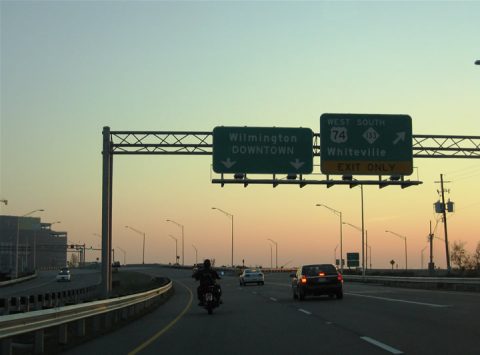
A new interchange complex was built at the east end of the Parsley Street Bridge, joining new U.S. 74 & North Carolina 133 with the bridge and 3rd Street north of downtown. Here is the scene on U.S. 74 west & North Carolina 133 south at the 3rd Street off-ramp into Wilmington. The two highways otherwise turn west to cross the Cape Fear draw bridge.
West of Wilmington, U.S. 74 & 76 travel together to the town of Whiteville. The corridor is dubbed part of Future Interstate 74, complete with one corridor sign in place on the drive. For the most part the four lane divided highway exists to expressway standards, though Whiteville itself sees a freeway bypass. It would not take much to upgrade this drive into Interstate 74, 20, or 174.

